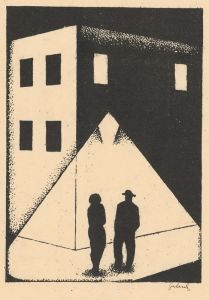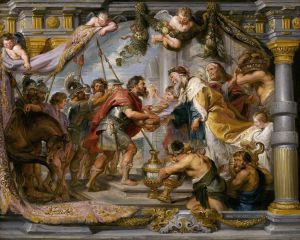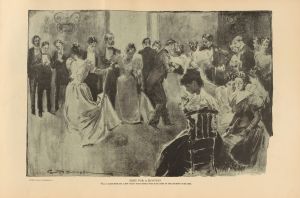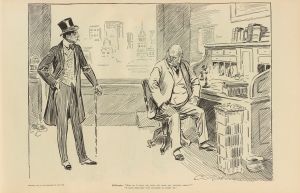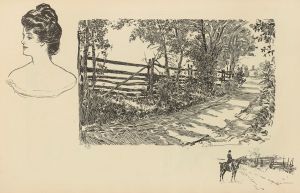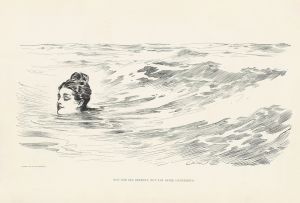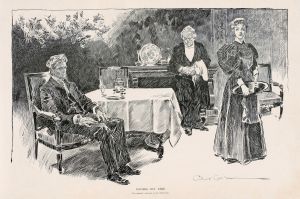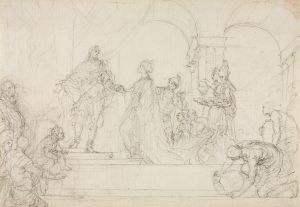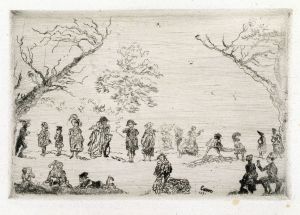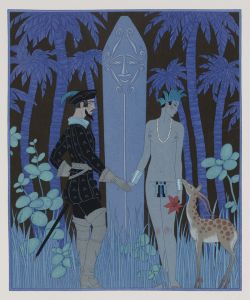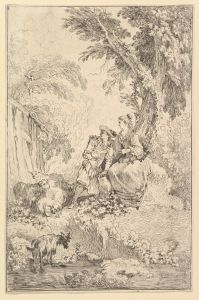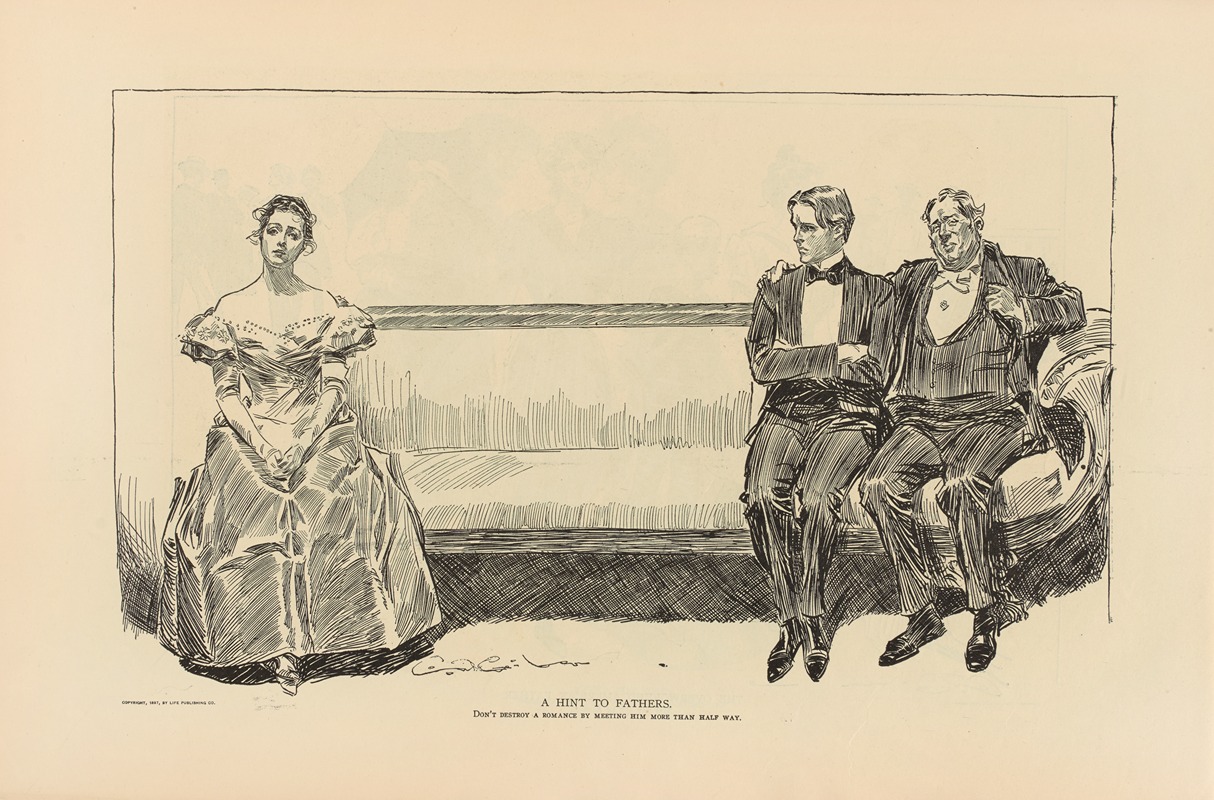
A hint to fathers. Don’t destroy a romance by meeting him more than half way
A hand-painted replica of Charles Dana Gibson’s masterpiece A hint to fathers. Don’t destroy a romance by meeting him more than half way, meticulously crafted by professional artists to capture the true essence of the original. Each piece is created with museum-quality canvas and rare mineral pigments, carefully painted by experienced artists with delicate brushstrokes and rich, layered colors to perfectly recreate the texture of the original artwork. Unlike machine-printed reproductions, this hand-painted version brings the painting to life, infused with the artist’s emotions and skill in every stroke. Whether for personal collection or home decoration, it instantly elevates the artistic atmosphere of any space.
Charles Dana Gibson was an influential American illustrator, best known for his creation of the "Gibson Girl," an iconic representation of the American woman at the turn of the 20th century. His works were widely published in magazines such as Life, Harper's Weekly, and Scribner's, and they played a significant role in shaping the visual culture of the era.
One of Gibson's notable works is the illustration titled "A hint to fathers. Don’t destroy a romance by meeting him more than half way." This piece, like many of Gibson's illustrations, reflects the social norms and cultural attitudes of its time. The illustration likely depicts a scene involving a father, a young man, and a young woman, capturing the dynamics of courtship and parental involvement in romantic relationships during the late 19th and early 20th centuries.
Gibson's work often contained subtle social commentary, and this particular illustration may suggest the importance of allowing young couples to navigate their relationships without excessive interference from parents. The title itself serves as advice to fathers, cautioning them against being overly involved or accommodating in their daughters' romantic affairs. This reflects a broader cultural shift towards more modern views on romance and courtship, where young people were beginning to assert more independence in their personal lives.
The "Gibson Girl" archetype, which frequently appeared in Gibson's illustrations, represented an idealized version of femininity that was both fashionable and independent. While "A hint to fathers" may not explicitly feature a "Gibson Girl," the themes of romance and social interaction align with the broader context of Gibson's work. His illustrations often depicted women who were confident and socially active, navigating the complexities of modern life with poise and grace.
Gibson's illustrations were characterized by their detailed line work and expressive characters, capturing the subtleties of human interaction with both humor and insight. His ability to convey complex social dynamics through simple yet elegant drawings made his work highly popular and influential. The illustrations were not only artistic expressions but also reflections of the societal changes occurring during the Progressive Era, a time when traditional gender roles and social norms were being questioned and redefined.
Overall, "A hint to fathers. Don’t destroy a romance by meeting him more than half way" exemplifies Charles Dana Gibson's talent for capturing the essence of his time. Through his art, Gibson provided a window into the evolving cultural landscape of America, offering both entertainment and commentary on the social issues of his day. His legacy as an illustrator endures, with his works continuing to be studied and appreciated for their artistic merit and historical significance.





